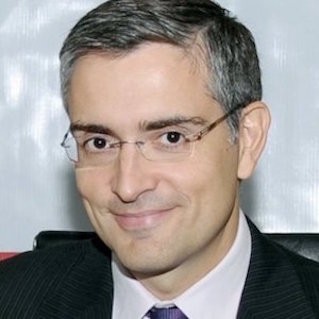
We spoke to attendees at Money 20/20 to ask them their views on payment trends, predictions for the coming year and what the ideal payments ecosystem looks like.
Here’s our interaction with Ludwig Schulze, CEO of Mistral Mobile.
PYMNTS: WHAT ARE SOME OF THE BIGGEST TRENDS, CHALLENGES, OBSTACLES AND OPPORTUNITIES YOU SAW IN 2015?
LS: The perspective that Mistral Mobile takes is perhaps a little bit different spectrum than other parties. Our businesses focuses in two primary areas. One is in the emerging market doing mobile solutions for FIs in that region and then doing mobile security products for worldwide customers and so from where we sit, the unique thing that we have seen in 2015 is the amazing growth of mobile money in emerging markets. It’s just astounding.
Within there we see that it’s not just telcos, it started with the telco led environment. What we are also seeing is that banks are now more actively involved in the space now, whereas, previously, it was sort of hands off. As well as just newcomers. For instance, BigCash Deutsche Bank and are doing extremely well in Bangladesh, State Bank of India in India is also developing wallet based products. And, I think, it’s really the expansion of the mobile money environment from some of the simple payments to actually much more complicated eCommerce type of transactions that we would be accustomed to seeing in the U.S. and Canada. So that for us is a big part of what we see that’s been exciting this year.
PYMNTS: WHAT ARE SOME OF THE CHALLENGES THAT WE WILL SEE GOING INTO 2016?
LS: I think, again in the mobile money scheme environment, we are still very much at the tip of the iceberg as there are 2.5 billion people who don’t have access to financial services in the world. It remains a challenge and getting to those people through their mobile phone. But there are still technical hurdles making that difficult because most people in the world don’t have access to mobile Internet, for example. About 85 percent people in the emerging markets simply don’t have that so those are of course some of the problems that we solve, but of course it remains a challenge for the industry to overcome continual growth to reach that 2.5 billion, which are fundamentally the next middle class. Today, they might be a relatively low value, but in 5 years, 10 years or 15 years, having a relationship with those people, especially in financial services where stickiness is everything, can be extremely powerful.
We are gonna continue to see more parties going after that opportunity space. This 2.5 billion new middle class is something increasingly recognized as a really interesting opportunity. Obviously, in the developed markets and not to undermine any of the great things that have happened in the past year, we are fundamentally shifting people’s mode of presenting a payment mechanism with mobile as opposed to increasing the total size of the pie. Some people would debate, I am sure there is some relative increase, but its not the same as adding 2.5 billion people who have never touched payments. That’s gonna continue to be a very interesting space with a lot of activity and certainly we see the big players continuing to look at it.
If you think of mobile security, it’s a whole new space. There are still a lot of unknowns. We are very much in the early days of figuring out how to optimize all these things. I think there’s still so much confusion about what’s the optimal model, about what’s gonna function, what are consumers going to embrace and what are they not going to — so we are probably still going to see a lot of chaos in 2016. But we are going in the right direction, I think.
PYMNTS: IN A NON-CHAOTIC PERFECT WORLD, HOW WOULD PAYMENTS WORK? WHAT ASPECTS OF PAYMENTS HAVE TO BE THERE?
LS: This invisible transaction model is great, but payments is not something people want to do so we have to strike the right balance between making the transaction and the payment portion of the thing very easy. Unless, it shouldn’t be because not every transaction should be invisible. You need to know as a consumer what’s going on with your funds and need to have some control, but we are only I think at the very-very early stage like a horse and buggy without a buggy. We are sort of in the same kind of place. Where we are taking the cart as the traditional payment mechanism and we are trying to stick it into this mobile phone and make it function. And thankfully tokenization is bringing us in a new direction, but we are still in that mentality.
Payments is typically thought of as the last step of the transaction — the last thing that happens. But there’s so much information and understanding and knowledge that comes inherent in that, that it needs to become part of the entirety of the process. My payment history, transactions, what I buy, and where and how — the individual line items is an incredible treasure trove. We know that, but we haven’t figured out what to do with it and how to make it part of the entirety. I wanna be in a place where today we have plastic cards that are really-really stupid and we still think of payments in that mindset whereas we are going to mobile, it is fundamentally a super computer.
We have only just begun to appreciate what the potential is of bringing that level of intelligence into the payments world. It has inherently become a much broader conversation about how consumers really think, but then there’s the consumer trust factor. It could developed if we can involve banks and other trusted financial institutions into the conversation.
 Ludwig Schulze is the CEO of Mistral Mobile, a NYC-based mobile solutions company that handles banking, payments and commerce for retailers, banks and financial institutions.
Ludwig Schulze is the CEO of Mistral Mobile, a NYC-based mobile solutions company that handles banking, payments and commerce for retailers, banks and financial institutions.